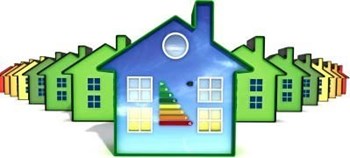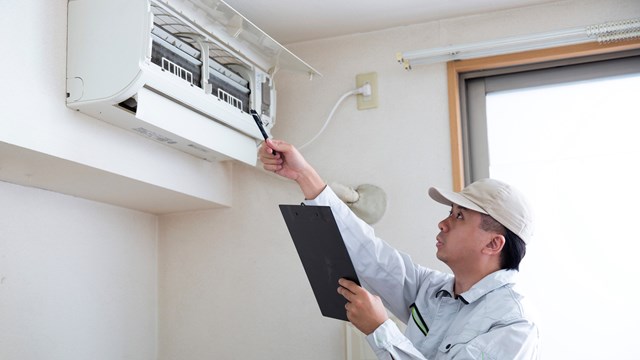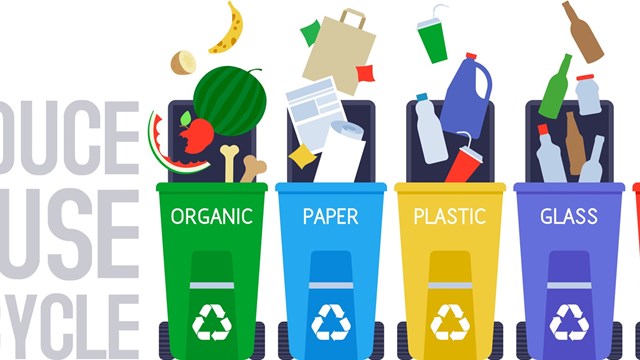
Talk of green homes these days often evokes images of roof gardens, solar collectors and even wind turbines humming in the background.
But for most homes, including condominiums, “going green” comes in much smaller measures. Individual owners and association boards can take any number of steps on the road to a more environmentally-conscious lifestyle – and pocket significant savings along the way. Converted triple-deckers, 1980s townhouses, and even brand-new condominiums all present opportunities for green improvements that can lead to increased comfort and continuing cost savings.
Taking the First Steps
Reining in electric bills – and saving energy – can start with installing compact fluorescent bulbs. The Union of Concerned Scientists claims that if every household in the United States replaced just one regular incandescent light bulb with a compact fluorescent light bulb, it would prevent 90 billion pounds of greenhouse gas emissions from power plants, the equivalent of taking 7.5 million cars off the road – and, over the life of the bulb, save $30in electricity costs.
The U.S. Environmental Protection Agency suggests starting by placing the CFL bulbs in fixtures that are used frequently and left on for long periods of time, so beyond individual units, condominium associations may consider them a good choice for placeslike hallways and community centers.
An added advantage, says Deborah Meehan, a Certified Energy Auditor and owner of New England Energy Audit in Londonderry, New Hampshire, is the long life span of the bulbs. While they cost more to purchase, they generally last for 8 to 12 times as long as a standard bulb – “so you don’t haveto have maintenance people changing out bulbs twice a year.”
While reviewing ideas for cutting electric use, Meehan suggests taking a good look at the family refrigerator. “Refrigerators that are older than 1995 can consume an considerable amount of electricity, even if they’re working fine,” she says. “The only way you can tell is by testing with a meter.” In one home she visited, she said, the refrigerator alone was costing the homeowners $350 a year; when they replaced it, the cost dropped to $8 or $9 a month.
A final opportunity for easy pickings on the electric-savings tree may be found in the basement, where dehumidifiers often run year-round, whether needed or not. “They really only need to be on in the summer, and they should be the kind that turn off when you reach the desired level” of moisture in the air, she suggests.
Such steps may be obvious, but experts who inspect homes – even recently-built condominiums – often find that they haven’t been taken, evenas energy costs rise and discussions of climate change dominate the media.
Pressing Forward
Another step on the road to green can be looking at the energy systems within the envelope, such as Dr. Burt Jaffe did with Trinity Place, a 19-story, 95-unit luxury condominium in downtown Boston. After forming an energy committee composed of board members, managers, and residents, Jaffe, a resident of the condominium, conducted a six-month inspection of the systems at Trinity Place, followed by a free energy audit from the utility company NStar.
The two first projects the condominium undertook, swapping out light bulbs and fixtures in the garage and adding variable speed controls to the hot and cold water pumping system connected to the computerized energy management system, are on track to pay for themselves in less than one year.
After putting together a plan to increase efficiency in the air flow system, Jaffe moved on to start the company Building Energy Solutions Together (B.E.S.T.), and now offers audits and energy analysis for other buildings. B.E.S.T. packages typically offer custom rebates and a one- to two-year payback. And Jaffe claims, “the condos get 100% of the energy savings from day one.”
Those conservation efforts at Trinity Place, incidentally, also landed Jaffe the 2008 Green Home Conservation Award from the city of Boston. While electricity is a major expense for any individual home or condominium association, rising water and sewer bills are also leading to thoughts of conservation. For many homes, that can be as simple a step as repairing leaky faucets and toilets.
But at Forbes Park in Chelsea, just outside of Boston, the developers took bigger steps while renovating the former industrial building into “hybrid” lofts: A rain-water recycling system for toilets in the building reduces the cost, and waste, of fresh water.
That may be a step too far for most existing condominium buildings, but new products on the market are making it easier for residents and association boards to reduce water use. Cutting water use is both a financial and ecological boon for communities –both those tied into expensive municipal sewers and those maintaining on-site septic systems.
Low-flow shower heads, of course, have been put into countless homes over the past decade and more, and new homes are built with low water-use toilets. Today, several inexpensive systems are on the market to trim water use and waste in the bathroom, among them a new “Perfect Flush” toilet retrofit that converts existing fixtures to dual-flush use. Scott Pinizzotto, CEO of Brondell, Inc., which has just brought the product to market, predicts that the Perfect Flush will “save up to 50% of your toilet water consumption.”
Changes in laundry rooms, too, can impact water and energy use. Nearly 10 years ago, the U.S. Department of Energy conducted a washing-machine study at a condominium complex in Boston to determine the potential savings of converting traditional “vertical-axis” machines (top loaders) to “horizontal axis” machines (front-loaders). Their finding: “the changeover to the h-axis washer reduced the average water consumption by 41%. The washer energy consumption including washer energy and hot water energy fell by 50% due to the hot water savings as well as more efficient motor and controls. The dryer energy savings for the study was 22%, which mainly attributed to the high speed spin cycleof the h-axis washer reducing the remaining moisture content of the clothing after wash.”
“The low-hanging fruit – things like switching lighting, shower heads, dual flush toilets – people are definitely employing,” says Craig Nicholson, director of sustainable development at Ajax Properties, a Boston asset management and development firm. “And beyond that, you’re seeing on a much broader scale that developers are incorporating green features because the more they do, the more competitive advantage they have over the project next door. Green buildings are on the market for a shorter period of time; that minimizes carrying costs for the developer. The market is really starting to favor green buildings a little more –people are willing to spend a little extra for those features, knowing they are going to have lower expenses down the line.”
While more new developments are using green materials and technologies, Nicholson, a LEED Accredited Professional, says that owners of older homes should not feel left out of the green movement. Programmable thermostats, heat-reflective film on windows, and the use of eco-friendly products during kitchen and bath renovations are all within reach of homeowners and associations.
Warm and Cozy
Still, for most New England condominium-dwellers, the biggest opportunities for saving energy – and money – come with tightening up the building envelope.
“A lot of [federal] stimulus money is heading toward green technology and green jobs,” Nicholson says. “Weatherization is really starting to take off – over the next year we’ll see lot of funding opportunities geared toward weatherization of existing buildings.”
And that’s definitely the road for homeowners to follow now, Meehan agrees. “One of the biggest problems I see in condominiums is the lack of insulation,” she says. “When you lay fiberglass between floor joists, it leaves gaps, and often the builder throws it in badly… and that’s where most of the heat loss is.” Since most buildings have been built with fiberglass insulation, there is ample room for improvement in most buildings, she notes. “Attics should be insulated to an R-49. Typically I see 10 or 12 inches of fiberglass, but because of the gaps and voids, it really only comes to R-19 or -20.”
The R-value is a measure of insulation’s heat loss retardation under specified test conditions. The bigger the number, the better the building insulation’s effectiveness.
Because of the nature of condominiums, individual homeowners may not be responsible for the insulation in their own attics, so it’s a good idea, she says, to check with an association board before increasing insulation. What has proven to be helpful, she adds, is for homeowners to work with their boards – to have full energy audits conducted on one or two different models in a complex, and then apply the results to other homes since it’s likely they will have the same issues.
Audits like those conducted by Meehan include thermal imaging – which shows where heat is being wasted –and a blower-door test that clearly demonstrates air leaks in the home.
Drawing the Line
Going further down the green path requires more soul-searching, the experts say. Ajax Partners worked with a condominium in Westford, Massachusetts, to develop plans for a hydroelectric system, taking advantage of the mill’s river location and history. The development of the aforementioned Forbes Park lofts included wind technology. Johnson Square Village, a Brockton, Massachusetts condominium, made headlines when it was built with a solar system designed to provide 100 percent of its electric needs.
Taking such bold steps with wind, water and solar power may be enticing, says Nicholson, who last year served on Massachusetts’ Zero Net Energy Buildings Taskforce – but they come at a price, and in today’s market, that price may still be too high.
“Before you even think about doing renewable stuff, you should focus on making the building more efficient, through new insulation, windows, roofing,” Nicholson says. “The key is to try to get as close to zero as you can… and then, the last 15 percent you target with the solar panels.”
Payback times on “green” efforts can vary greatly, Meehan notes. Full energy audits, which generally cost between $300 and $500, come with reports detailing improvements that are needed, what they cost, and what the payback period is likely to be.
“If it’s between one and seven years, that’s a no-brainer,” Meehan said. “At seven to 10, you might want to think about it. And over 10, it’s generally not recommended.”
Warm and fuzzy feelings aside, she said, “You have to look at it the same way you look at investing in anything else –you look at what your return is before you make the decision.”
Pat Gale is the associate editor of New England Condominium magazine. Robert Todd Felton contributed to this article.






Comments
Leave a Comment